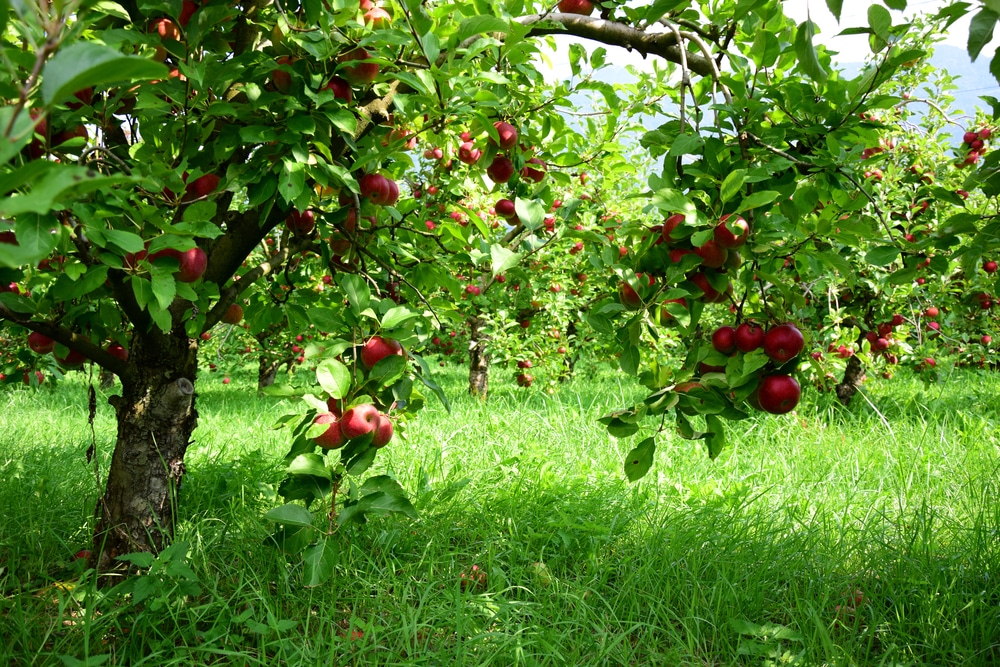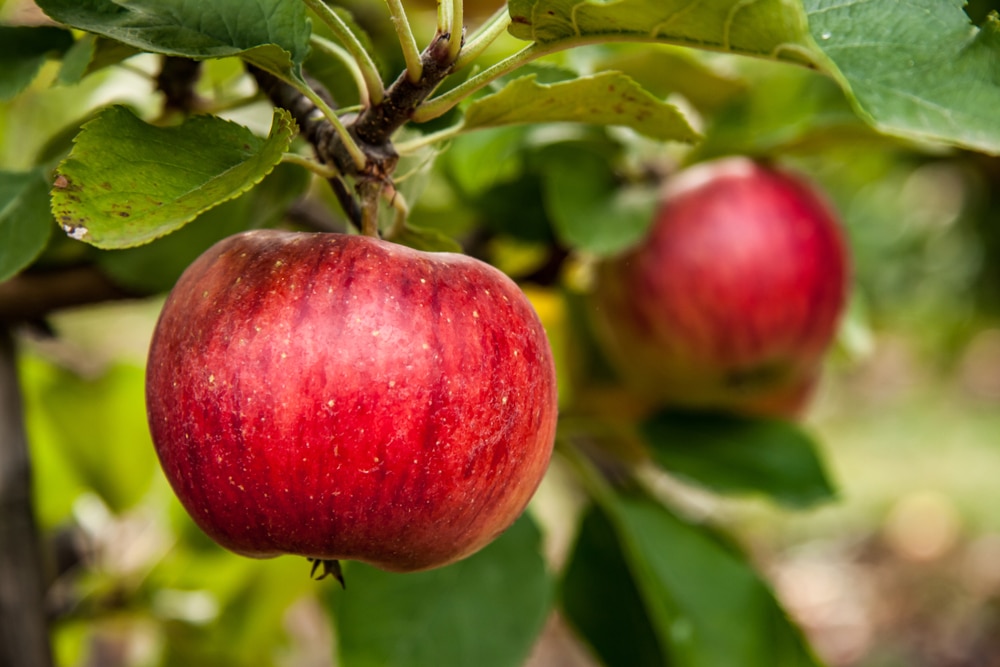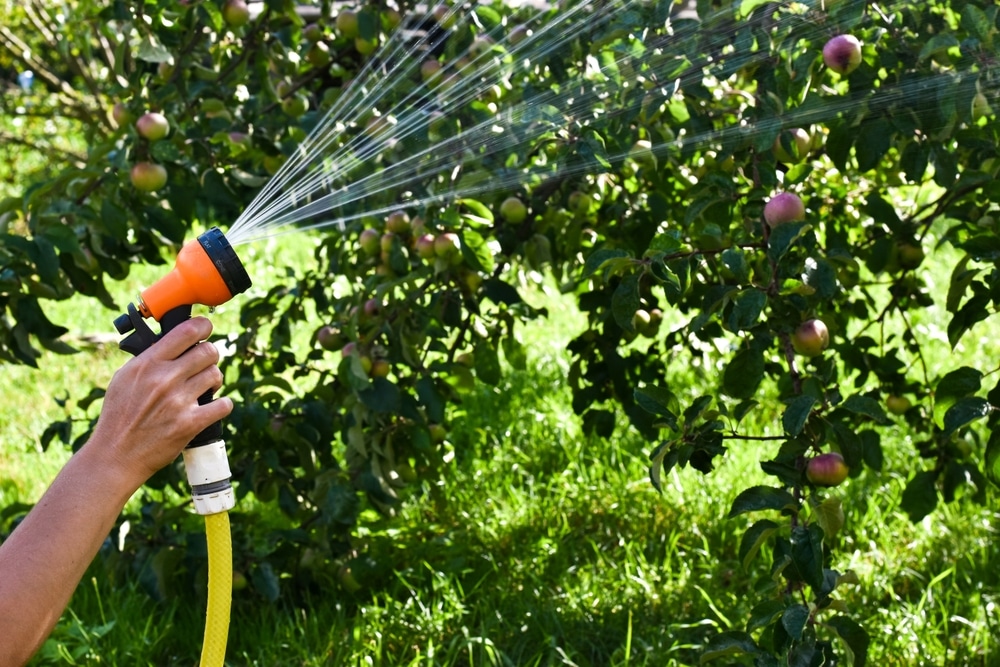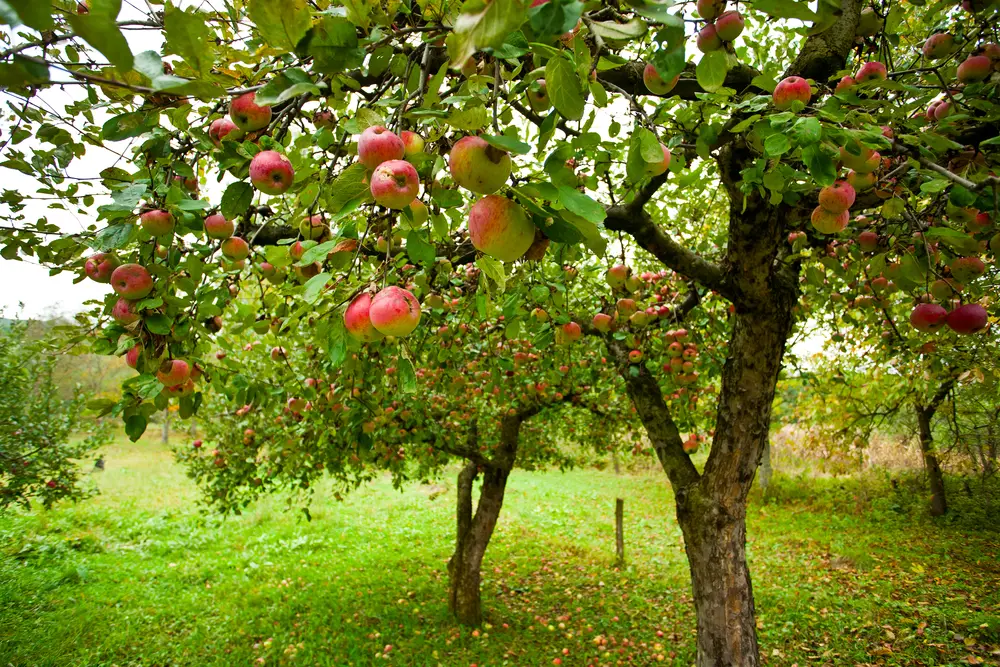Key Takeaways
- Apple trees take different amounts of time to grow, generally between two and ten years.
- Apple trees go through key stages of growth: germination, seedling, sapling, and mature. The time to go through these stages depends on several influencing factors.
- These factors include the apple tree’s variety, climate, placement, soil quality, watering, feeding, and other forms of tree care.
Knowing how long it takes to grow an apple tree gives you a good perspective on the amount of care and patience you need when growing this type of tree. So, just how long does it take to grow an apple tree?
How Long Does It Take To Grow An Apple Tree?

The time it takes to grow an apple tree depends on several factors, including the tree variety, your climate, and how big your tree is to start with.
To give you a rough answer, you’re looking at between two and ten years.
The Stages Of Apple Tree Growth
Like all plants, apple trees have stages of growth, from starting as a seed to growing into a mature, fruit-bearing tree. Each stage is a significant milestone during which the tree changes dramatically.
Seed Growth (Germination)
This stage begins when the apple seed begins to grow, triggered when the seed has the right temperature, water, and oxygen.
When the conditions are right, the apple seed will absorb water and swell. This will activate the embryo, lying dormant, to begin growing.
Firstly, the root (called a radicle) will grow into the soil. A shoot will emerge shortly after (the plumule), which grows upward in search of light.
Seedling Stage
This stage is when the plant becomes visible above the soil. You’ll see its first leaves develop, a crucial stage necessary for photosynthesis (when a plant uses sunlight to convert carbon dioxide and water into glucose, an energy source).
As a seedling, your apple tree will work on establishing strong roots. During this time, it is particularly vulnerable and needs proper care.
Sapling Stage
This is the phase when you’ll see more mature characteristics in your apple tree, such as growing taller and having a strong trunk. It will also have thicker branches and more leaves.
Apple trees develop their structure during this stage. As such, you must provide adequate support to ensure stability as it establishes its shape for optimum fruit bearing.
Mature Stage
During this stage, your apple tree is fully grown and will begin flowering and bearing fruit. Of course, you’ll still need to give it proper care, but this is when all your hard work and patience start to pay off!
Apple Tree Growth Rates

An apple tree’s three key stages follow a general timeline, though this does vary depending on a range of factors, which we’ll cover later.
Typically, germination takes between 2 and 4 weeks from when you plant the seed. Temperature, moisture levels, and seed quality all influence how long germination takes.
Your apple tree will develop as a seedling for 2 to 3 years. So, if you’re planting from seed, you’ll need to be a little patient.
The sapling stage also lasts several years, depending on various factors. All in all, it might be 4 to 6 years before your tree is a mature sapling.
When To Expect Fruit
The timing of an apple tree’s fruit production varies based on its age, variety, and growing conditions. Dwarf and semi-dwarf trees begin to bear fruit earlier than standard-sized trees, which can be from 2 to 4 years after planting.
Standard trees might take up to 8 years or longer.
Factors Affecting Apple Tree Growth Rate
Several factors affect how quickly apple trees grow, including variety, climate, and more.
Let’s start with variety.
Apple Tree Variety
Some apple tree varieties grow quicker and bear fruit earlier than others. Generally, dwarf and semi-dwarf apple tree varieties grow more quickly. You’ll get fruit sooner from these varieties compared to standard-size trees.
Climate And Geography
Where you live will affect your apple tree’s growth. Cold climates with shorter growing seasons can mean your tree develops more slowly, while warmer areas can mean quicker growth.
However, apple trees also need a certain number of “chill hours.” This refers to the number of hours of cold temperatures over the winter season. Ultimately, there’s a “sweet spot” range where things are just right (generally, this is between 500 and 1,000).
Placement
Aside from the climate and geography where you live, where you plant your apple tree also plays a part in how well it grows. Apple trees thrive in sunlight. Placing in full sun with lots of space helps them grow best.
Apple trees also need adequate space for air to circulate. This reduces the risks of the tree developing fungal disease. However, if the tree is too exposed to strong winds, it could slow its growth.
Soil
Soil quality also affects apple tree growth. A rich and well-draining soil will mean your tree accesses nutrients and water easily. If you have poor-quality or compacted soil, the root development might not be as strong, impacting how well the tree grows.
Apple Tree Care For The Best Growth

Though apple trees are pretty easy to look after, there are some things you can do to ensure optimal growth and fruit production.
Let’s start with watering and feeding.
Watering And Feeding
The watering requirements of your apple tree will change as it goes through the different growth stages. The tree will also have different watering requirements when you move it from a pot to your garden.
How often and how much you water your tree depends on your climate, the season, and how much it rains. Generally, apple trees need consistent watering, especially during the growing season.
Deep watering less frequently is better than light, daily watering. This means the roots get enough moisture. You don’t want the soil to be waterlogged, though.
Fertilize your apple trees annually. Ideally, you should do this before any new growth in early spring. Choose a fertilizer designed for fruit trees. It should contain nitrogen, phosphorus, and potassium, essential tree nutrients.
Pruning
Pruning your apple tree once a year will help shape the tree and improve airflow. Most pruning should happen in later winter or early spring while your tree is dormant.
You can thin out fruit clusters once the fruit sets too. This will encourage larger apples to grow and promote uniform fruit sizes.
Mulching And Weeding
Don’t neglect the base of your tree. It is easy to concentrate on the fruit-bearing branches, but mulching and weeding are essential for apple trees, too.
Remove weeds regularly from the tree base. Weeds are problematic for two reasons. Firstly, they compete for water and nutrients. Secondly, they can house pests and diseases.
Applying a layer of organic mulch like woodchips also helps suppress weed growth. Lay the mulch around the tree’s base to the drip line (the circular area on the ground below the tree’s canopy), but keep it a few inches away from the trunk.
Mulch helps soil retain moisture and also regulates the temperature around the roots.
Pests And Diseases
One final factor in tree care is monitoring your apple tree for pests and diseases. Regular inspection means you’ll catch them early.
Unusual spots, discolored leaves, or chewed foliage are all signs of pests and diseases. Like all things, it’s best to prevent these things from happening in the first place.
Pruning to increase airflow, removing fallen leaves, weeding, and mulching all help ward off unwanted problems.
If you do find pests, try to find out the exact problem so you can treat it appropriately. You can also reach out to a professional for help.
Common apple tree pests include:
- Aphids
- Caterpillars
- Mites
- Apple maggots
The three most common diseases affecting apple trees are:
- Apple Scab: This causes the fruit to be misshapen and drop prematurely. It looks like green to black spots on the fruit and leaves.
- Cedar Apple Rust: This affects apple trees in areas with cedar or juniper trees growing. As the name suggests, this disease leaves rust-colored spots on the fruit and leaves. It causes similar problems to apple scab.
- Powdery Mildew: This is a common fungal disease. It appears as a white substance on fruit, leaves, and shoots. Its presence leads to poorer fruit quality and distorted growth.
